#firealarmdesign
Explore tagged Tumblr posts
Text

Talon Fire Alarm Design, Consulting & Services: Ensuring Comprehensive Fire Safety Solutions for Your Building
Talon Fire Alarm Design, Consulting & Services is a company that specializes in providing comprehensive fire alarm services to a wide range of clients, including commercial, industrial, and institutional customers. With years of experience in the industry, Talon Fire Alarm Design, Consulting & Services has established a reputation for delivering high-quality solutions that meet the needs of their clients.
Fire alarms are an essential part of any building's safety system. They are designed to detect smoke and fire and alert occupants, allowing them to evacuate the premises quickly and safely. A well-designed and properly installed fire alarm system can mean the difference between life and death in the event of a fire.
Talon Fire Alarm Design, Consulting & Services offers a range of services to help clients ensure that their fire alarm systems are functioning correctly and providing the necessary level of protection. These services include fire alarm design, installation, testing, and maintenance.
Fire alarm design is a critical aspect of the process, and Talon Fire Alarm Design, Consulting & Services has a team of experienced professionals who are well-versed in the latest codes and standards. They work closely with clients to understand their needs and develop customized solutions that meet their specific requirements. This includes selecting the appropriate type of fire alarm system, determining the best location for detectors, and designing the system to meet the building's unique layout and occupancy.
Once the fire alarm system is designed, Talon Fire Alarm Design, Consulting & Services can also provide installation services. Their team of licensed and certified technicians has extensive experience in installing fire alarm systems in a variety of settings, from small retail stores to large industrial facilities.
Testing and maintenance are also essential components of any fire alarm system. Regular testing ensures that the system is functioning correctly and detecting smoke and fire as intended. Talon Fire Alarm Design, Consulting & Services provides comprehensive testing services to ensure that their clients' fire alarm systems are functioning correctly. Additionally, they offer maintenance services to keep the system up to date and in compliance with local codes and regulations.
In conclusion, Talon Fire Alarm Design, Consulting & Services is a company that offers comprehensive fire alarm services to clients in a variety of industries. With their experience and expertise, they can design, install, test, and maintain fire alarm systems that meet the unique needs of each client. By partnering with Talon Fire Alarm Design, Consulting & Services, clients can rest assured that their buildings are equipped with the latest technology and providing the necessary level of protection in the event of a fire.
#fire#firealarm#firealarmsystem#firesafety#safety#fireprotection#firedetection#firealarmdesign#firealarmdesigner#firetechnicians#talon#talonfirealarmdesign
1 note
·
View note
Text
Benefits of Aspirating Smoke Detection

Aspirating smoke detection is a very reliable method of detecting smoke by using a sophisticated detector that recognizes the existence of smoke particles suspended in the air. An aspirating smoke detector (ASD), also called an air sampling smoke detector, will typically detect smoke before that is invisible to the naked eye by recognizing the light scattered by the smoke particles in the sampling chamber. An ASD works by drawing air with a fan through a piping system and into the sampling chamber.
National Fire Protection Association (NFPA) Code Requirements
An ASD system is required to meet National Fire Protection Association (NFPA) codes and regulations, including NFPA 72, the National Fire Alarm and Signaling Code. NFPA 72 requires the sampling holes to be spaced at equivalent configurations of spot smoke detectors, which are spaced at 30 feet with the ability to protect 900 square feet. Requirements for a Standard Fire Detection (SFD) system require maximum transport time of the furthest sampling hole to the ASD be no more than 120 seconds. ASD systems must also adhere to NFPA 75 and NFPA 76, which are the standards for the Protection of Information Technology Equipment and Fire Protection of Telecommunications Facilities, respectively. NFPA 76 details the regulations of more sensitive smoke detection systems that give early warning and are divided into two categories; the Early Warning Fire Detection (EWFD) system and a Very Early Warning Fire Detection (VEWFD) system. Regulations for the EWFD reduce the maximum transport time to 90 seconds, and the coverage area for a sampling hole is 400 square feet. Regulations for a VEWFD system are further reduced to a transport time of 60 seconds, with 200 square feet coverage for a single sampling hole. All ASD systems designed in the US must adhere to these codes which cover the commissioning, installation, and testing of aspirating smoke detection systems.
Components of an Aspirating Smoke Detector
An ASD system consists of three main components; the network of sampling pipes, the aspirating smoke detector, and the exhaust pipes.
Sampling Pipes of an ASD
The network of sampling pipes collect air through the sampling holes and deliver it to the detector to test for the presence of smoke particles. The network of sampling pipes can be made of plastic, copper or brass, and may be installed with single or multiple pipe configurations. Single pipe configurations may result in delayed transport time with one pipe extending throughout the covered space connecting to the detector. Multiple pipe configurations allow for either horizontal or vertical placement, and versatility in placing pipes in concealed locations.
Types of Aspirating Smoke Detectors
The aspirating smoke detector is available with different detection technologies, although all contain similar equipment. The three types of technologies are laser based, cloud chamber and dual sourced. Laser based systems are available in two variations, one with a filter and one without. In a filtered laser system, air passes through the filter system first to remove large particles, then is moved past the laser which measures the scatter of smoke particles caused by the laser light. A non-filtered laser system is also referred to as particle counting, with air passing in front of the laser without any filtration. The number of particles are counted by a sophisticated photo collector, and will alert if sufficient particles of smoke are present. The cloud chamber method of an ASD utilizes a sealed chamber holding dense water vapor that causes a reaction when interacting with smoke particles. This reaction causes the particles to ionize and become visible where the chamber will detect the mist and smoke particles. A dual source sensor is the third method of technology used in an ASD, utilizing a blue LED light to detect very low levels of smoke with an infrared laser that helps to identify dust particles preventing false alarms.
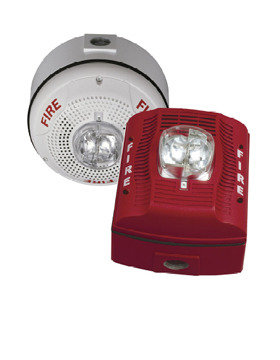
ASD Exhaust Piping
The exhaust system is a key component as the air pressure inside and outside of the pipes make a difference in how the air is transported to the testing chamber, and can affect the transport time. Sophisticated software is used to determine transport time, usually with the assumption that the air pressure is the same in the pipes as it is in the room the system is mounted. The exhaust air must be piped into the same room that is being sampled to eliminate differences in air pressure.
Several Benefits of an ASD
An aspirating smoke detection system provides several benefits which include the following: Provides an early warning of smoke before it is even visible to the human eye An ASD works even when the air handling system is not working Works well even in low air damper environments Easy accessibility for service and testing remote areas such as lofty ceilings without climbing ladders to maintain smoke detectors ASD systems are compatible with addressable and conventional fire alarm systems These are just some of the many benefits to an aspirating smoke detection system, which can provide very early warning of smoke or fire, saving lives and property. High Rise Security Systems is an experienced fire safety consulting firm with experience in ASD and all smoke and fire prevention systems. We provide total safety to all types of commercial properties including low-rise, high-rise, campuses and mass complexes. HRSS is a leader in fire and safety prevention, providing total system design compliant to all codes and regulations, including local municipalities including the Chicago area. Our experienced designers utilize AutoCAD software to provide a detailed layout of your ideal fire alarm system with the best names in the business for fire alarm systems and control panels such as Notifier® by Honeywell. We conduct testing, maintenance and monitoring 24/7/365 for total safety of your building and all occupants. HRSS is a leader in fire alarm safety, helping building owners and contractors to develop a total fire safety plan in any type of structure. Contact us today to learn more about our comprehensive fire and safety services, and to learn more about the early warning protection from an aspirating smoke detection system. Read the full article
0 notes
Photo
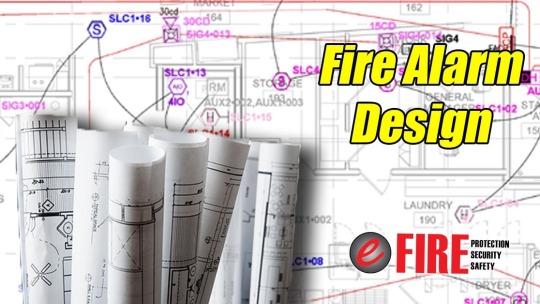
New Project? Retrofit Project? E Fire is your fire alarm design and installation source. For more information on our design services call (662) 842-7201 #firealarmdesign #firealarminstallation #firealarmsystems #efire
0 notes
Text
UL864 9th Edition and NFPA72 Guide Fire Alarm Contractors

All fire alarm contractors should be aware of the requirements set forth in UL864, 9th Edition, for qualifying fire detection equipment as UL certified. Underwriter’s Laboratories (UL), is an American safety and certification company, recognized globally for examining and applying Certification Marks for products that pass their testing and inspection standards. UL864 is the Standard for Control Units and Accessories for Fire Alarm Systems, governing the fire protection industry worldwide, with the most recent ninth edition revised in 2008. UL864 is the most widely accepted regulation recognized globally, with the exception of Europe which adheres to regulations set forth by the European Commission.
National Fire Protection Association (NFPA) 72
UL864 follows the life safety code issued by the National Fire Protection Association (NFPA), NFPA72, the National Fire Alarm and Signaling Code. NFPA72 is the standard that details the latest provisions set forth for fire detection, fire alarm signals and requirements for emergency communications. NFPA72 also includes standards and regulations for Mass Notification Systems (MNS) utilized during weather emergencies, biological, nuclear and chemical emergencies and terrorist events and threats. NFPA72 is updated and managed on regular intervals, typically every three years, by a committee of industry and subject matter experts to incorporate technological changes. The most recent edition of NFPA72 was revised and updated in 2016. UL864 requires that all fire alarm equipment that was manufactured after 2005 must comply with NFPA72, 2002 revision. Manufacturers had until December of 2008 to comply with those revision.
UL864 Ninth Edition
UL864 Ninth Edition incorporates a minimum of four areas of NFPA72, and forced manufacturers of fire alarms to update all product lines so that they comply with NFPA72. Areas of focus in UL864 Ninth Edition include: Changing the scope of the standard itself Changes that make UL864 consistent with UL’s methods of testing products Changes that bring UL864 congruent with other UL safety standards Changes to make UL864 consistent with the current edition of NFPA72 The new standard with its expanded scope covers: NFPA13 Sprinklers NFPA15 Water Spray Systems NFPA16 Foam Water Systems NFPA17 Dry Chemical Extinguishers NFPA17A Wet Chemical Extinguishers NFPA92A Smoke Control NFPA92B Smoke management in malls NFPA2001 Clean Agent Extinguishing Systems These are in addition to the standards previously covered in UL864 Eighth Edition, which include NFPA12, 12A, 12B and 72.
UL864 Ninth Edition Applies to Fire Alarm Equipment Only
Fire alarm design and installation companies will not be affected by UL864 as this applies solely to the actual fire alarm equipment, with no impact on how fire detection systems are installed. Fire alarm design firms have been adhering to NFPA72 along with other various building codes, federal and local. An example is the response time for fire alarms to be ten seconds or less during a minimum of two cycles, this requirement is included into the equipment standard of UL864. Additional key requirements are as follows: Enhanced resistance to RF Interface Better synchronization of Notification Appliances Greater software integrity Broader programming requirements Updates in Supervision, Monitoring, Compatibility, Power transmission UL864 Ninth Edition made great strides in providing assurance and confidence of meeting and exceeding the most recent industry fire safety standards.
HRSS Provides Compliant Fire Alarm Equipment and Design
High Rise Security Systems is a leading fire, life and safety consulting firm providing system design, UL certified equipment, implementation, testing, repairs, maintenance and monitoring 24/7/365. We offer decades of experience in meeting all fire safety code regulations, and exceeding the bare minimum requirements to provide the best system possible no matter the building design. We are experienced at designing fire and smoke detection systems for all types of commercial properties including low-rise, high-rise, college campuses and medical complexes. We employ highly skilled design engineers experienced with all local, state and federal regulations to design the optimum fire system with AutoCAD software.
HRSS Provides Fire Extinguisher Service

HRSS is licensed in the state of Illinois to provide portable fire extinguisher service for all fire extinguisher types. We provide annual fire extinguisher service, 6-year and 12-year maintenance, and all portable fire extinguisher services. High Rise Security Systems is experienced with all National Fire Protection Association standards related to fire alarm equipment, design, installation, notification and testing requirements. We work closely with building owners, safety managers and electrical engineers to ensure a compliant fire detection system that goes above and beyond actual code requirements, to provide maximum safety to building properties and occupants. UL864 Ninth Edition is a springboard for safer, better fire alarm equipment and products, providing confidence to building engineers, architects and owners that their fire detection system will meet the technological demands required of buildings today. High Rise Security Systems is a leading fire, life and safety company with decades of experience to ensure total compliance and safety for all commercial properties. Contact us today to speak with an engineer to learn more about how we can assist with your fire and safety requirements. Read the full article
0 notes
Text
Enhance Campus Safety with Integrated Fire Alarm and Emergency Communication System

A Mass Notification System (MNS) is also referred to as an Emergency Communication System (ECS) with both terms used interchangeably to identify a system which provides real-time information to notify all occupants of a facility or campus and the immediate vicinity of emergency situations. The United States Department of Defense outlines necessary criteria for mass notification and emergency communication systems in the Unified Facilities Criteria (UFC) publication. Emergency communication systems must also comply with standards set by the National Fire Protection Association (NFPA), the Americans with Disabilities Act (ADA), the International Building Code (IBC), OSHA and FEMA’s Outdoor Public Alerting System. In our last post, Mass Notification Systems are Much More Than an Alarm, we outlined the main code requirements from the UFC and the NFPA, and the components of an MNS. Every school, college and campus must understand the local, state and federal code requirements of an emergency communication system, which are necessary but can seem overwhelming. Incorporating the assistance of a fire safety system professional early in the process will save time, money, and ensure adherence to regulations. High Rise Security Systems, HRSS, provides total code compliance including datasheets to assist with permit approval to commercial facilities and educational institutions in Illinois.
School and Campus Safety Risk Analysis
Prior to the design and implementation of an Emergency Communication System, a thorough risk analysis must be completed to identify threats most relevant to the unique campus situation. It is important to gather all relevant stakeholders which typically include: Facility owners and Board of Directors Facility safety directors and emergency management officials Security officials of the campus Facilities maintenance personnel Local first responders Fire alarm design professional Fire alarm system integrator Risk analysis must include potential threats relevant to the specific campus. For example, schools and campuses located in the Midwest should include an emergency plan with instructions on how to respond during tornadoes. Whatever your unique situation, including all relevant stakeholders and school professionals in the process will help to identify all threats so that the selected team can prioritize them and determine where to focus attention to mitigate risk. While all steps and security measures should be taken to prepare for natural disasters and to prevent the intrusion of harmful individuals, risk analysis must also include a plan for when these measures fail. How will you let the occupants know that a situation exists and the best way to respond? How will you communicate evacuation procedures or changes in procedures for certain areas? Campuses benefit from a multifaceted approach, with life and safety systems that provide emergency communication of unique messages that can change with the situation, allowing facilities to deliver the right message, at the right time, to the right people. Emergency communication systems can deliver notifications to occupants in various ways, which may include: Prerecorded or live voice announcements delivered inside or outside the building Digital signs where a warning could be displayed and updated Social media alerts Text messages Texting alerts are highly effective as they are quickly seen on most devices and are hard to miss. Digital signs, social media and text alerts are also beneficial in loud arenas like sporting or music events. Strobe lights can help to grab the attention of the listener and are proven to make an audible message more effective. Risk analysis must also include identifying the situations in which the ECS would be deployed, and the best methods for communication to reach the intended occupants. Once the risk analysis is complete and all participants agree on the plan, a fire alarm system design professional can provide guidance on the proper system design and integration.
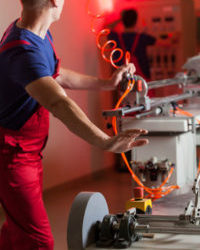
Involve a Fire Alarm System Professional Early for Best Results
High-Rise Security Systems, HRSS, is a qualified fire alarm system design and integration professional, experienced in working with risk analysis teams to develop and enhance an effective Emergency Communication System and overall fire, life and safety system. Best results including lower costs, adherence to all codes and regulations and a smooth installation of a high-performing, reliable ECS and fire safety system occurs when incorporating professional fire and safety system consultants early in the risk analysis process.
Emergency Communication and Fire Alarm Systems
Emergency Communication Systems are required to contain features similar to fire alarm systems which include: Survivability Supervision Backup power Intelligibility Consistent maintenance and testing Some PA systems may offer ECS services, but many lack these mandated requirements. Working with a licensed fire alarm system professional ensures the adherence to all code requirements with approved equipment and proper placement of all sensors and devices. Meeting code regulations, however, is only one part of the overall safety system design. A timely and organized evacuation in time of emergency is a critical consideration of all emergency communication systems. An experienced fire and safety system professional can ensure that safety and evacuation measures are put in place that go above and beyond code requirements to provide additional safety measures relevant to your unique building structures. Integrated ECS and fire alarm systems offer both public and private mode signaling, with web- based systems designed to prioritize hazard announcements to targeted audiences. High Rise Security Systems provides safety system design for protection in educational institutions from fire, natural disasters and intrusion which must be the highest priority of all educational facilities. HRSS is experienced in protecting several educational institutions in Illinois including Chicago public schools, the University of Chicago, the Loyola school of medicine, the University of Illinois at Chicago and many other campuses. Including the fire system professionals at HRSS in your advanced planning phases will minimize costs while providing a thoroughly developed, code compliant and effective fire and safety system. Read the full article
#commercialfirealarms#firealarm#firealarmdesign#firealarminspection#fireandsafetysystems#firesafetysystem#integratedsystems
0 notes
Text
Business Can Now Deduct the Full Cost of Fire Alarm Systems
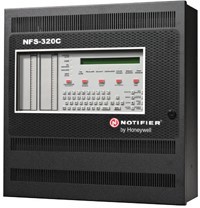
Section 179 refers to the tax code that allows businesses to deduct an amount larger than normal depreciation for assets, typically thousands of dollars, during the year placed in service. The expenses allowed to businesses under the Section 179 deduction is designed as an incentive for companies to invest more in their business, as the tax savings can be significant. Given the expansion of the Section 179 deduction under the new Tax Cuts and Jobs Act, there has never been a better time for businesses to add equipment, and now even building improvements. One of the most important changes with H.R.1, the new tax law signed on December 22, 2017, is the incentive for businesses to invest in building fire protection and alarm systems. Beginning in 2018, businesses may expense the entire cost of these systems in the year placed in service, up to specific limitations. The limits are now set at $1 million, which begin to phase out after a company has reached $2.5 million in qualifying asset acquisitions. While tangible personal property such as machinery and equipment was the typical expense under Section 179, the expansion now includes improvements to qualified nonresidential real property such as heating and air conditioning (HVAC) systems, roofs, ventilation, security systems and fire protection and alarm systems. Click here to review all types of qualifying property.
HRSS is Your Full-Service Fire Alarm System Provider
High Rise Security Systems is recognized is a full-service fire and safety systems provider, offering skilled fire system design, inspections, repairs, testing and monitoring 24/7/365. We are a certified distributor of the leading brand names in fire safety, including Honeywell Notifier® fire alarm systems which offer fire and safety systems for any sized building or property. HRSS works with building owners, electrical contractors, engineers and architects to develop the best fire system design for your building. HRSS provides fire safety systems that meet all code requirements including local fire safety codes specific to the city of Chicago, the State of Illinois and National regulations including all National Fire Protection Association, NFPA, standards, Americans with Disabilities Act, ADA, requirements, International Building Code, IBC, regulations and any other applicable fire safety regulations. Whether you are constructing a new building or retrofitting an older one, HRSS has the fire and safety solution which goes above and beyond code requirements. We ensure early detection and warning systems are designed to provide maximum safety to your occupants and protection to your property.
Let HRSS Help Determine the Best Fire Alarm System for Your Property
High Rise Security Systems will help you evaluate your options with fire and safety systems to determine the best type to fit your building. We offer fire alarm system design for all types of commercial properties including, high-rise buildings, low-rise buildings, mass complexes and campuses. Take advantage of the Section 179 deduction and invest in or upgrade your fire alarm safety system for your commercial property. HRSS will partner with you to be sure that you install the best system for your property, without spending more than you need to. HRSS is recognized as a leading fire alarm system company, providing comprehensive services to provide maximum protection to your building occupants and property. Contact us today to learn how you can save on taxes when you invest in building improvements such as reliable fire detection and alarm systems. Read the full article
0 notes
Text
Business Can Now Deduct the Full Cost of Fire Alarm Systems

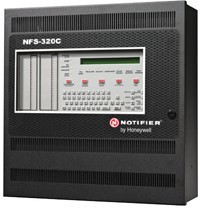
Section 179 refers to the tax code that allows businesses to deduct an amount larger than normal depreciation for assets, typically thousands of dollars, during the year placed in service. The expenses allowed to businesses under the Section 179 deduction is designed as an incentive for companies to invest more in their business, as the tax savings can be significant. Given the expansion of the Section 179 deduction under the new Tax Cuts and Jobs Act, there has never been a better time for businesses to add equipment, and now even building improvements. One of the most important changes with H.R.1, the new tax law signed on December 22, 2017, is the incentive for businesses to invest in building fire protection and alarm systems. Beginning in 2018, businesses may expense the entire cost of these systems in the year placed in service, up to specific limitations. The limits are now set at $1 million, which begin to phase out after a company has reached $2.5 million in qualifying asset acquisitions. While tangible personal property such as machinery and equipment was the typical expense under Section 179, the expansion now includes improvements to qualified nonresidential real property such as heating and air conditioning (HVAC) systems, roofs, ventilation, security systems and fire protection and alarm systems. Click here to review all types of qualifying property.
HRSS is Your Full-Service Fire Alarm System Provider
High Rise Security Systems is recognized is a full-service fire and safety systems provider, offering skilled fire system design, inspections, repairs, testing and monitoring 24/7/365. We are a certified distributor of the leading brand names in fire safety, including Honeywell Notifier® fire alarm systems which offer fire and safety systems for any sized building or property. HRSS works with building owners, electrical contractors, engineers and architects to develop the best fire system design for your building. HRSS provides fire safety systems that meet all code requirements including local fire safety codes specific to the city of Chicago, the State of Illinois and National regulations including all National Fire Protection Association, NFPA, standards, Americans with Disabilities Act, ADA, requirements, International Building Code, IBC, regulations and any other applicable fire safety regulations. Whether you are constructing a new building or retrofitting an older one, HRSS has the fire and safety solution which goes above and beyond code requirements. We ensure early detection and warning systems are designed to provide maximum safety to your occupants and protection to your property.
Let HRSS Help Determine the Best Fire Alarm System for Your Property
High Rise Security Systems will help you evaluate your options with fire and safety systems to determine the best type to fit your building. We offer fire alarm system design for all types of commercial properties including, high-rise buildings, low-rise buildings, mass complexes and campuses. Take advantage of the Section 179 deduction and invest in or upgrade your fire alarm safety system for your commercial property. HRSS will partner with you to be sure that you install the best system for your property, without spending more than you need to. HRSS is recognized as a leading fire alarm system company, providing comprehensive services to provide maximum protection to your building occupants and property. Contact us today to learn how you can save on taxes when you invest in building improvements such as reliable fire detection and alarm systems. Read the full article
0 notes